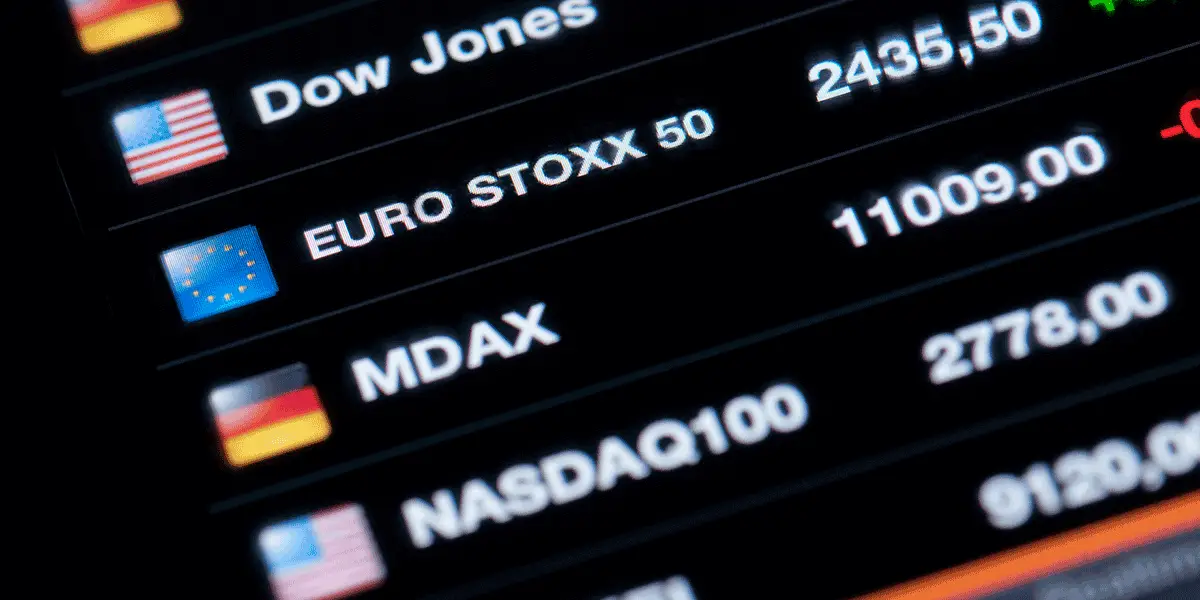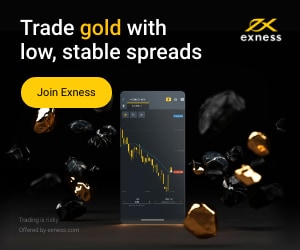Table of Contents
In our previous articles, we wrote about the Dow Jones, S&P 500, and Nasdaq. Let us define indices.
Stock market indices are crucial in trading as they provide a snapshot of the market’s health, reflecting the collective performance of their component companies, which helps investors gauge market trends and portfolio performance. They serve as benchmarks that guide traders and investors in comparing current price levels with past prices, determining market sentiment, and making informed predictions on future market movements.
Difference Between Dow Jones S&P 500 and Nasdaq
The Dow Jones Industrial Average (DJIA) comprises 30 significant U.S. companies from various sectors, representing a small sample of the American economy. In contrast, the S&P 500 includes 500 of the largest U.S. publicly traded companies, offering a broader market overview. At the same time, the Nasdaq Composite primarily covers technology-focused firms and includes over 3,000 stocks listed on the Nasdaq Stock Market.
We can explain the Difference Between Dow Jones S&P 500 and Nasdaq from 5 different angles:
1. Origin and History:
- Dow Jones Industrial Average (DJIA): Founded in 1896 by Charles Dow, the DJIA is one of the oldest stock indices. Initially, it tracked 12 of the most significant public companies, but it has grown to include 30.
- S&P 500: Introduced in 1957, the S&P 500 was designed to measure the performance of the broader U.S. economy by tracking 500 of the most prominent publicly traded companies.
- Nasdaq Composite: Launched in 1971, the Nasdaq Composite tracks companies listed on the Nasdaq Stock Market, which initially aimed to attract technology-based firms.
2. Composition:
- DJIA: Comprises 30 major U.S. companies across various industries. The selection is somewhat subjective, based on the companies’ significance and representation of the American economy.
- S&P 500: Includes 500 of the leading companies in the U.S., making it more representative of the overall U.S. stock market compared to the DJIA.
- Nasdaq Composite: Primarily tech-centric, it also includes stocks from various sectors. It covers more than 3,000 companies listed on the Nasdaq stock exchange.
3. Calculation Method:
- DJIA: It’s a price-weighted index, meaning stocks with higher share prices have a more significant impact on the index’s movement.
- S&P 500: It’s a market capitalization-weighted index, which means companies with larger market values carry more weight.
- Nasdaq Composite: Also a market capitalization-weighted index, emphasizing the company’s value over its share price.
4. Representation:
- DJIA: Given its limited number of stocks, some argue it might not represent the broader market as effectively as other indices.
- S&P 500: Often seen as the best indicator of the overall U.S. stock market health due to its comprehensive coverage.
- Nasdaq Composite: Reflects trends in the tech sector and growth-oriented stocks, given the high number of tech companies listed on the Nasdaq.
5. Performance & Volatility:
- DJIA: Its narrow focus can lead to more volatility, particularly if one of its 30 companies experiences significant price fluctuations.
- S&P 500: Typically serves as a benchmark for overall market and mutual fund performance in the U.S.
- Nasdaq Composite: Historically, it can be more volatile than the other two due to its tech-heavy composition.
In summary, while all three indices provide insights into the U.S. stock market’s performance, their composition, focus, and methodologies differ significantly. It’s essential to consider these differences when evaluating market trends or making investment decisions.
The distinction in volatility: Of all the three indices, Dow Jones happens to be the least volatile since it constitutes slower-moving components that include blue-chip companies like Boeing Company, 3M Company, and United Healthcare. On the other hand, the Nasdaq 100 is the most volatile due to its high concentration of riskier, high-growth companies, including Facebook, Amazon, and Google. In the S&P 500, volatility is in the middle of the two.
Volatility Distinction:
- Dow Jones:
- The least volatile of the three indices.
- Constituted by slower-moving, blue-chip companies such as Boeing Company, 3M Company, and United Healthcare.
- Nasdaq 100:
- Most volatile among the three.
- High concentration of riskier, high-growth companies like Facebook, Amazon, and Google.
- S&P 500:
- Volatility is intermediate, falling between Dow Jones and Nasdaq 100.
Using Indices in Trading Strategy:
- Indices are akin to assets in markets.
- Tools Used:
- Fundamental Analysis: Emphasized by long-term trade investors.
- Technical Analysis: Prioritized by short and intermediate-term traders.
- Volatility Insights:
- Higher volatility was observed during market uncertainties.
- Lower volatility when market prices rise, and behavior is more predictable.
- CBOE Volatility Index:
- Also known as the “fear gauge.”
- Indicates the role of fear in influencing market volatility.
- Useful for short-term traders seeking opportunities in volatile markets.
Role of Market Direction in Volatility:
- Day and Swing Traders:
- Focus on short-term price fluctuations.
- Exchange Hours:
- It is crucial for determining liquidity and trade timings.
- Participation outside of these hours is typically minimal.
Including the different indices to form a trading strategy: Indices can be considered close to market assets. Hence, various tools, such as fundamental and technical analysis, are used to conclude. The use of these tools varies based on the terms of trade.
What is Dow Jones?
Dow Jones or Dow or DIJA represents a stock index of 30 blue-chip industrial and financial companies in the United States. The Dow Jones index is price-weighted and does not account for changes in market capitalization. Dow Jones & Co. was founded in 1882 by Charles Dow, Edward Jones, and Charles Bergstresser.
What is Dow Jones today?
[stock_market_widget type=”inline” template=”generic” assets=”DOW” markup=”{name} ({symbol}) is trading at current live price {price} ({change_pct}). See chart below. ” api=”of”]
[stock_market_widget type=”chart” template=”basic” color=”#5679FF” assets=”DOW” range=”1mo” interval=”1d” axes=”true” cursor=”true” range_selector=”true” display_currency_symbol=”true” api=”yf”]
Dow Jones Industrial Average Index real-time
What is Nasdaq?
Nasdaq, or National Association of Securities Dealers Automated, represents an electronic exchange for buying and selling securities managed by the Financial Industry Regulatory Authority (FINRA). The Nasdaq Composite is a stock market capitalization-weighted index that consists of the stocks that are listed on the Nasdaq stock exchange.
[stock_market_widget type=”inline” template=”generic” assets=”^IXIC” markup=”{name} ({symbol}) is trading at current live price {price} ({change_pct})” api=”yf”]
[stock_market_widget type=”chart” template=”basic” color=”#5679FF” assets=”^IXIC” range=”6mo” interval=”1d” axes=”true” cursor=”true” range_selector=”true” api=”yf”]
What is the S&P 500?
The Standard & Poor’s 500 or S&P 500 or S&P or SPX represents a weighted stock market index comprising the 500 largest companies by market capitalization listed on the New York Stock Exchange (NYSE) Nasdaq. Founded in 1957, the S&P 500 represents the strength of the U.S. economy.
S&P 500 chart and current price
[stock_market_widget type=”chart” template=”basic” color=”#5679FF” assets=”^GSPC” range=”6mo” interval=”1d” axes=”true” cursor=”true” range_selector=”true” api=”yf”]
[stock_market_widget type=”inline” template=”generic” assets=”^GSPC” markup=”Currently S&P 500 is trading at {price} ({change_pct}). In the last 52 weeks, the lowest low was {52_week_low} and 52 week high was {52_week_high}” api=”yf”]
DJIA (Dow Jones Industrial Average) – Price-Weighted Index
A price-weighted index gives weight to stocks based on their per-share price. The DJIA’s calculation is relatively straightforward but undergoes adjustments for stock splits, spin-offs, and other corporate actions.
Method:
- Add up the share prices of all 30 companies in the index.
- Divide the sum by the “Dow Divisor.” The Dow Divisor is not a fixed number and changes to ensure the continuity of the index, particularly when its constituent companies undergo stock splits, issue stock dividends, or make significant changes to their structure.
Implication: In a price-weighted index like the DJIA, a company with a higher share price has more influence on the index’s value than a company with a lower share price, irrespective of the actual size or market capitalization.
S&P 500 – Market Capitalization-Weighted Index
Market capitalization, or “market cap,” is calculated by multiplying a company’s share price by the total number of its outstanding shares. A market capitalization-weighted index, like the S&P 500, emphasizes companies with the highest market values.
Method:
- Compute the market cap of each company in the index.
- Sum up the market caps of all 500 companies.
- Divide the market cap of each company by the total market cap of all companies in the index. This provides the weight of each company in the index.
Implication: A company with a higher market cap will influence the S&P 500 more than a smaller market cap, even if the smaller company’s stock price sees a more significant percentage increase.
Nasdaq Composite – Market Capitalization-Weighted Index
The Nasdaq Composite, like the S&P 500, is based on market capitalization. However, it’s worth noting that the Nasdaq Composite includes more tech companies, giving it a different overall profile.
Method:
- Like the S&P 500, determine the market cap of each listed company.
- Sum the market caps of all the companies.
- Find the weight of each company in the index by dividing its market cap by the total market cap of all listed companies.
Implication: While the calculation is the same as the S&P 500, the Nasdaq Composite’s emphasis on tech companies means it’s more sensitive to movements in the tech sector. As with the S&P 500, larger companies by market cap have a more significant impact on index movements than smaller companies.
In conclusion, the index calculation method plays a significant role in understanding how different market forces influence each index. Whether the raw stock price in the DJIA or the overall company value in the S&P 500 and Nasdaq Composite, each approach offers a distinct perspective on market dynamics.
Conclusion
The Dow Jones Industrial Average (DJIA), S&P 500, and Nasdaq Composite are three of the most referenced stock market indices, but they differ significantly in their composition, calculation methods, and market representation. The DJIA is a price-weighted index comprising 30 major U.S. companies, providing a snapshot of large corporate giants across various sectors.
In contrast, the S&P 500, a market capitalization-weighted index, encompasses 500 of the largest publicly traded U.S. companies, offering a broader reflection of the U.S. stock market. The Nasdaq Composite, also market capitalization-weighted, predominantly focuses on technology and includes many companies listed on the Nasdaq stock exchange. These distinctions make each index unique in its sensitivity to market changes and representation of market segments, underscoring the importance of understanding their nuances when analyzing market trends or making investment decisions.

























